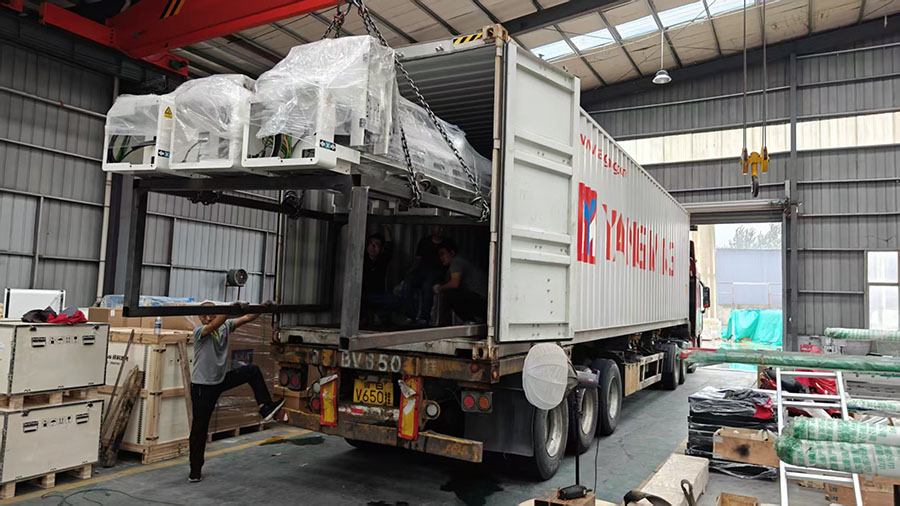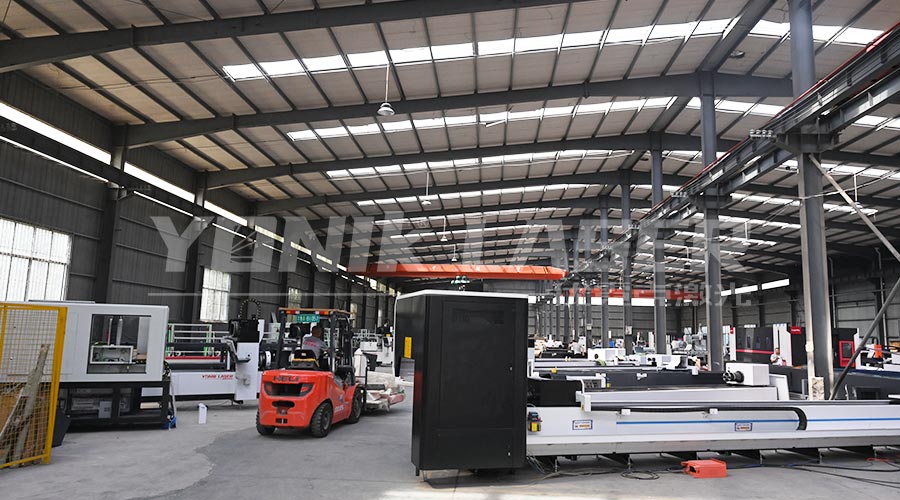In today's world, where laser cutting machines are widely used in fields such as aerospace, automotive manufacturing, and precision machinery, the issue of spark splashing during cutting processing has emerged as a critical factor affecting processing quality, equipment lifespan, and operator safety. This article will systematically analyze this industry pain point from three dimensions: the causes, impacts, and protective measures of spark splashing, providing technical references for enterprises to optimize processes and enhance efficiency.

I. Causes of Spark Splashing: A Complex Interplay of Materials, Parameters, and Equipment
1. Material Characteristics: The "Double-Edged Sword" of High Reflectivity and Surface Treatments
Highly reflective metals like aluminum and copper have low laser absorption rates, causing concentrated energy that leads to intense vaporization and, consequently, aggravated spark splashing. For instance, when cutting a 3mm aluminum plate without sandblasting pre-treatment, the amount of spark splashing can increase by 40% compared to pre-treated materials. Moreover, oil stains, oxide layers, or coatings on the material surface can alter the laser absorption path, creating localized overheating zones and further intensifying splashing. A case in point is an automotive parts manufacturer that failed to clean the surface of galvanized steel sheets, resulting in continuous slag adhesion on the cutting section and a 15% drop in the pass rate.
2. Parameter Mismatch: The "Triangular Dilemma" of Power, Speed, and Gas
Excessive laser power can trigger excessive material vaporization, forming an unstable molten pool. For example, when cutting 10mm carbon steel, increasing the power from 2000W to 2500W can raise the height of spark splashing from 5cm to 15cm. The matching of cutting speed and power is equally crucial. Tests conducted by a machine tool manufacturer revealed that when the speed exceeded the equipment's rated value by 20%, the frequency of spark splashing tripled, accompanied by diagonal grain defects on the cutting surface.
The selection of assist gas and pressure regulation are also core variables. When cutting carbon steel, oxygen, as a combustion-supporting gas, can accelerate slag blow-off, but excessive pressure (>0.8MPa) can cause violent fluctuations in the molten pool. When cutting stainless steel, nitrogen, due to its inertness, can reduce oxidation, but insufficient pressure (<0.5MPa) can lead to slag adhesion. An aviation enterprise adopted a segmented pressure control technology, using 0.3MPa nitrogen during piercing to suppress splashing and switching to 0.6MPa oxygen during cutting to enhance efficiency, reducing the surface roughness of the 304 stainless steel cutting section from Ra6.3μm to Ra3.2μm.
3. Equipment Condition: The "Invisible Killers" of Optical Path Contamination and Structural Aging
Contamination on the laser head lens reduces energy transmission efficiency, forcing operators to increase power and indirectly aggravating splashing. A device maintenance case showed that after cleaning the lens, the amount of spark splashing under the same cutting conditions decreased by 60%, and the lens lifespan tripled. Worn or clogged nozzles can disrupt the gas flow field. In a test, when using a worn nozzle for cutting, the slag back-splashing rate increased from 5% to 20%, directly leading to equipment downtime for maintenance. Additionally, structural issues such as unstable movement of the machine tool guide rails and misalignment of the optical path system can cause focal position deviation, resulting in excessive local energy density and aggravated splashing.
II. Impacts of Spark Splashing: The "Triple Costs" of Quality, Safety, and Cost
1. Processing Quality: From Surface Defects to Structural Failures
Slag adhesion caused by spark splashing can reduce the smoothness of the cutting section, affecting subsequent welding or coating quality. In the aerospace field, a certain type of engine blade suffered from slag embedding in the base material during cutting due to splashing, leading to crack propagation under high-pressure conditions and ultimately resulting in the scrapping of the entire engine. Moreover, the thermal stress concentration induced by splashing can cause deformation in thin-plate workpieces. In a new energy battery tray cutting project, uncontrolled splashing led to a 5mm warpage in a 0.8mm aluminum plate, preventing direct assembly.
2. Operational Safety: From Eye Injuries to Respiratory Risks
The sparks generated by laser cutting contain ultraviolet and infrared rays, and direct exposure for as little as 5 seconds can cause electric ophthalmia. An ophthalmology hospital's statistics revealed that the incidence of corneal injuries among laser cutting operators is three times that of ordinary workers. High-temperature molten slag (which can reach 800℃) from splashing may ignite work clothes. A factory once experienced a fabric fire caused by molten slag splashing, resulting in equipment damage. When cutting special metals like galvanized sheets, the zinc-containing smoke produced can cause metal fume fever if inhaled, with symptoms including fever and cough, and severe cases requiring hospitalization.
3. Equipment Wear: From Consumable Replacement to Machine Downtime
Frequent spark splashing accelerates the wear of consumables such as nozzles and lenses. An enterprise's statistics showed that before process optimization, the nozzle replacement cycle was 80 hours, which was extended to 200 hours after optimization, saving over 100,000 yuan in annual costs. Slag back-splashing can also clog the cooling system, causing the laser to overheat and shut down. A case study by a large machine tool manufacturer indicated that equipment failures caused by splashing account for 35% of annual maintenance cases, with an average downtime loss of 20,000 yuan per incident.
III. Protection Against Spark Splashing: A "Three-Dimensional" Prevention and Control Approach of Technology, Management, and Personal Protection
1. Technological Optimization: Suppressing Splashing at the Source
Material Pre-treatment: Sandblasting or coating highly reflective materials can reduce reflectivity by 30%-50%. A mobile phone middle frame processing enterprise adopted a nano-coating technology, reducing aluminum alloy cutting spark splashing by 70% and eliminating the need for frequent lens cleaning.
Intelligent Parameter Control: Introducing AI algorithms to monitor the molten pool state in real-time and dynamically adjust power, speed, and gas pressure. An intelligent cutting system developed by a German enterprise uses machine vision to identify splashing patterns and automatically optimize parameters, increasing stainless steel cutting speed by 20% and reducing splashing by 50%.
Gas Synergistic Control: Adopting pulsed gas supply technology, using low-pressure gas during piercing to suppress splashing and switching to high-pressure gas during cutting to enhance efficiency. Tests by a Japanese manufacturer showed that this technology can reduce the slag thickness on the carbon steel cutting section from 0.2mm to 0.05mm.
2. Equipment Maintenance: Establishing a Preventive Maintenance System
Optical Path Cleaning: Implement a daily inspection system for lens contamination, using professional cleaning agents and lint-free cloths for cleaning, and avoiding corrosive liquids like alcohol. An enterprise that implemented this system reduced the lens replacement frequency from twice a month to once a quarter.
Nozzle Inspection: Use a laser interferometer to detect the inner diameter wear of nozzles and replace them immediately when the wear exceeds 0.1mm. An aviation parts manufacturer reduced nozzle-related failure rates from 15% to 3% through this measure.
Cooling System Maintenance: Regularly replace the cooling fluid and clean the water circuit to prevent algae growth and blockages. A new energy enterprise's statistics showed that cooling system failures accounted for 25% of annual total downtime, which was reduced to 5% after implementing preventive maintenance.
3. Personal Protection: A Comprehensive Upgrade from Equipment to Behavior
Eye Protection: Operators must wear laser protective glasses that comply with the ANSI Z87.1 standard, with a wavelength filtering range covering the equipment's laser wavelength (e.g., 1064nm for fiber lasers). Tests by a safety equipment manufacturer showed that qualified protective glasses can attenuate laser energy to 1/10,000 of the safe level.
Respiratory Protection: When cutting special metals, operators should wear gas masks with filters meeting the NIOSH N95 standard. An automotive manufacturer equipped operators with powered air-purifying respirators, reducing the incidence of respiratory diseases from 8% to 1%.
Skin Protection: Wear flame-retardant work clothes (e.g., made of Nomex fabric) and high-temperature-resistant gloves (e.g., made of Kevlar) to prevent burns from molten slag. Safety tests showed that flame-retardant clothing can reduce the burn area by 70% when in contact with molten slag.

Conclusion: A Paradigm Shift from "Passive Response" to "Proactive Prevention"
The issue of spark splashing is essentially a "growing pain" as laser cutting technology advances towards higher precision and efficiency. By implementing material pre-treatment, intelligent parameter control, preventive equipment maintenance, and a comprehensive personal protection system, enterprises can control the defect rate caused by splashing to below 0.5% and increase the Overall Equipment Effectiveness (OEE) by 15%-20%. In the future, with the deep integration of technologies such as digital twins and machine vision, laser cutting will achieve a transition from "experience-driven" to "data-driven," providing more stable and safer processing solutions for high-end manufacturing.
2025-07-22
2025-07-21
2025-07-19